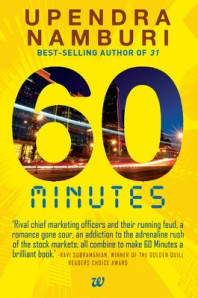Monthly Archives: July 2014
Tracing the history of India with Biriyani
 A good way of tracing the history of a nation is to study the pattern of cuisines that emanated in the region from time to time. A relic of the past is always imprinted in the changing food patterns of a country. It is well-known that the fertile Indo-Gangetic plain housed vegetarians in the Aryan, as well as subsequent, eras. Once people started migrating, and there was an intermixing of cultures, the food habits also underwent a change.
A good way of tracing the history of a nation is to study the pattern of cuisines that emanated in the region from time to time. A relic of the past is always imprinted in the changing food patterns of a country. It is well-known that the fertile Indo-Gangetic plain housed vegetarians in the Aryan, as well as subsequent, eras. Once people started migrating, and there was an intermixing of cultures, the food habits also underwent a change.
Now to the point. Biriyani. It is widely believed that Biriyani has a Persian origin (the word itself is derived from the Persian word Birian meaning roasted or fried rice). With the advent of the Mughal era in India, this particular cuisine gained prominence.
There is another school of thought – Vir Sanghvi wrote about it in a column for Hindustan Times – that Biriyani has a South Indian origin and is derived from the Kannada word bidi anna. This theory however needs validation.
The Awadhi Biriyani (popular in North India, specially Lucknow) is the remnant of the Mughal style. The rice and meat are partially cooked separately, then layered and cooked together in the dum pukht fashion.
As the Nawabs of Lucknow were overthrown by the British, they migrated to Eastern India. It was under the aegis of Nawab Wajid Ali Shah that the Calcutta Biriyani was born. Left with little wealth to afford meat, the Calcutta Biriyani comprised potatoes. In fact, potatoes are such an integral part of the Bengali cuisine that disappearance of this essential item from Biriyani at a time of potato-scarcity in 2013, made headlines in the media.
The Nizams appointed by the Nawab of Lucknow to govern South Indian provinces helped in the spread of Biriyani all over the country. Mixing local flavours with the original Mughal recipe led to the birth of a new genre. Take Hyderabadi Biriyani for example. It resembles the Awadhi Biriyani, except that it is too spicy, like Andhra cuisine. Even the Vaniyambadi biryani introduced by the Nawab of Arcot mixed local Tamil flavours with the original Mughali style.
In the end, what was originally a luxury of the Nawabs, has now become a regular meal for the masses. Specially here in Kolkata, any occasion would call for Biriyani from Arsalan or Shiraz. And if you liked this post, do not forget to share as you dig into your plate of Biriyani. Nom nom.
Eid Mubarak.
Book Review: 60 minutes by Upendra Namburi
 Whenever I visit Starmark, one ritual I always follow is to visit the Indian Writing section of the bookstore and read chunks from the novel 31 by Upendra Namburi. So, when I came to know that 60 Minutes, by the same author, was up for review in the Flipkart Review Programme, I was excited.
Whenever I visit Starmark, one ritual I always follow is to visit the Indian Writing section of the bookstore and read chunks from the novel 31 by Upendra Namburi. So, when I came to know that 60 Minutes, by the same author, was up for review in the Flipkart Review Programme, I was excited.
60 minutes is a sensational title for the novel that spans across events that are too many to fit into just an hour. This is the story of Agastya, the CMO of a bigshot FMCG company, which is going to launch its biggest product ever. But things soon take a turn for the worse and Agastya has just 60 minutes to save his job.
To make matters worse, he encounters Maithili, the woman he had occasional flings with. Maithili is suave, intelligent and beautiful but deprived of true love. She has vowed to seek revenge from Agastya for breaking her trust. She has only 60 minutes to turn his life upside down.
Like Ravi Subramaniam who gives brilliant insight into the dark world of banking, Namburi shares an insider’s perspective of how things work in sales and marketing in big corporations. And you never know how and when the corporate rivalry enters your bedroom.
The writing was pacy and almost felt like Arthur Hailey genre (remember Hotel and Airport?). 60 minutes makes for a perfect weekend read with its twists and turns. Ambition, obsession, competition, lust and greed can turn a life upside down. Upendra Namburi spells it out in his novel while holding a mirror to the big, bad corporate world of marketing.
My Rating: 3/5 stars
P.S. This review is part of the Flipkart Bloggers Affiliate Programme
DISCLAIMER: All Images Used In This Blog Post Have Their Respective Copyrights






